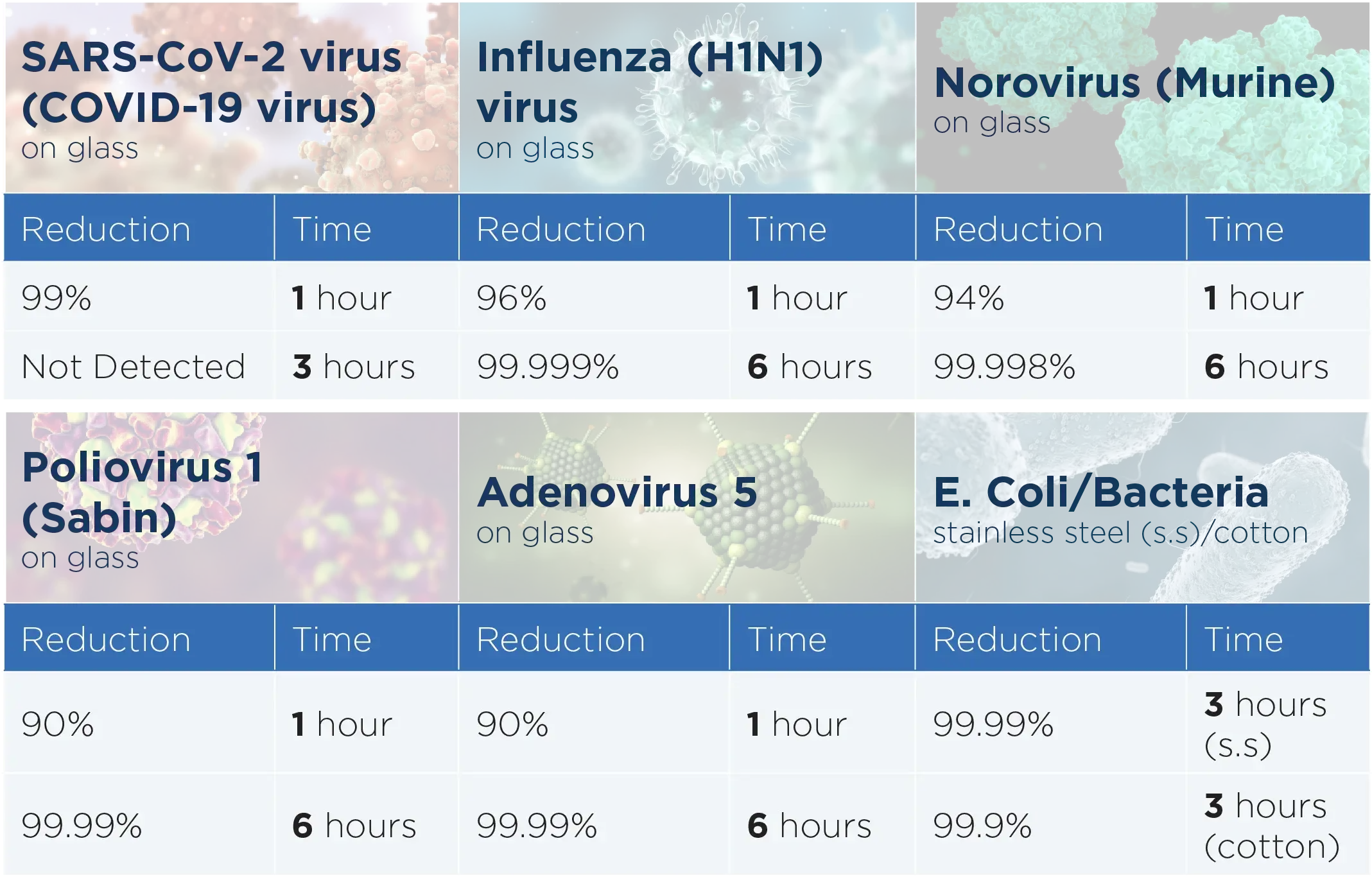Scientific Evidence
Safe and effective air purification proven by over 20 years on the market and the most extensive safety and efficacy data in the industry.
The Pyure Technology is in compliance, approved and certified by the following organizations.
Certifications ETL (US/CA), CE, FCC, CTIC, CQC, CSA, RoHS and REACH. The MDU/Rx™ portable model is registered with the FDA as a Class II medical device.
Destruction of Airborne Pathogens
At the Aerosol Research & Engineering Laboratories (ARE Labs), a U.S. laboratory specializing in the study of aerosolized microorganisms, Pyure conducted an evaluation of the kill rate on several pathogens, including viruses, bacteria and mold. The Odorox® MDU/Rx™ device demonstrated a kill rate of between 99.9% and 99.99% within an hour.
Two viruses were selected to evaluate performance against RNA and DNA based viruses:
- MS2 bacteriophage is a positive sense, single-stranded RNA virus that infects the bacterium Escherichia coli. MS2 is routinely used as a simulant for pathogenic RNA viruses such as SARS.
- Phi-X174 bacteriophage is a circular single stranded DNA based virus that infects the bacterium Escherichia coli. Phi-X174 is routinely used as a simulant for DNA viruses such as smallpox.
Two vegetative bacteria were selected as simulants for a broad range of pathogenic bacteria:
- Staphylococcus epidermidis, a Gram-positive bacterium and simulant for a range of medically significant pathogens such as Staphylococcus aureus (“staph” infections).
- Erwinia herbicola, renamed Pantoea agglomerans, is a Gram-negative bacterium commonly used as a simulant for Francisella tularensis and Yersinia pestis (bubonic plague).
One species of black mold
- Aspergillus niger was selected because it is a pernicious black mold that has been attributed to many respiratory problems for infants, the elderly and immunocompromised individuals. It is particularly difficult to kill in air and on surfaces.
Scientific Graphs
Pyure efficacy was evaluated on five biosecurity level one (BSL-1) microorganisms that are considered representative of a broader range of more pathogenic organisms:
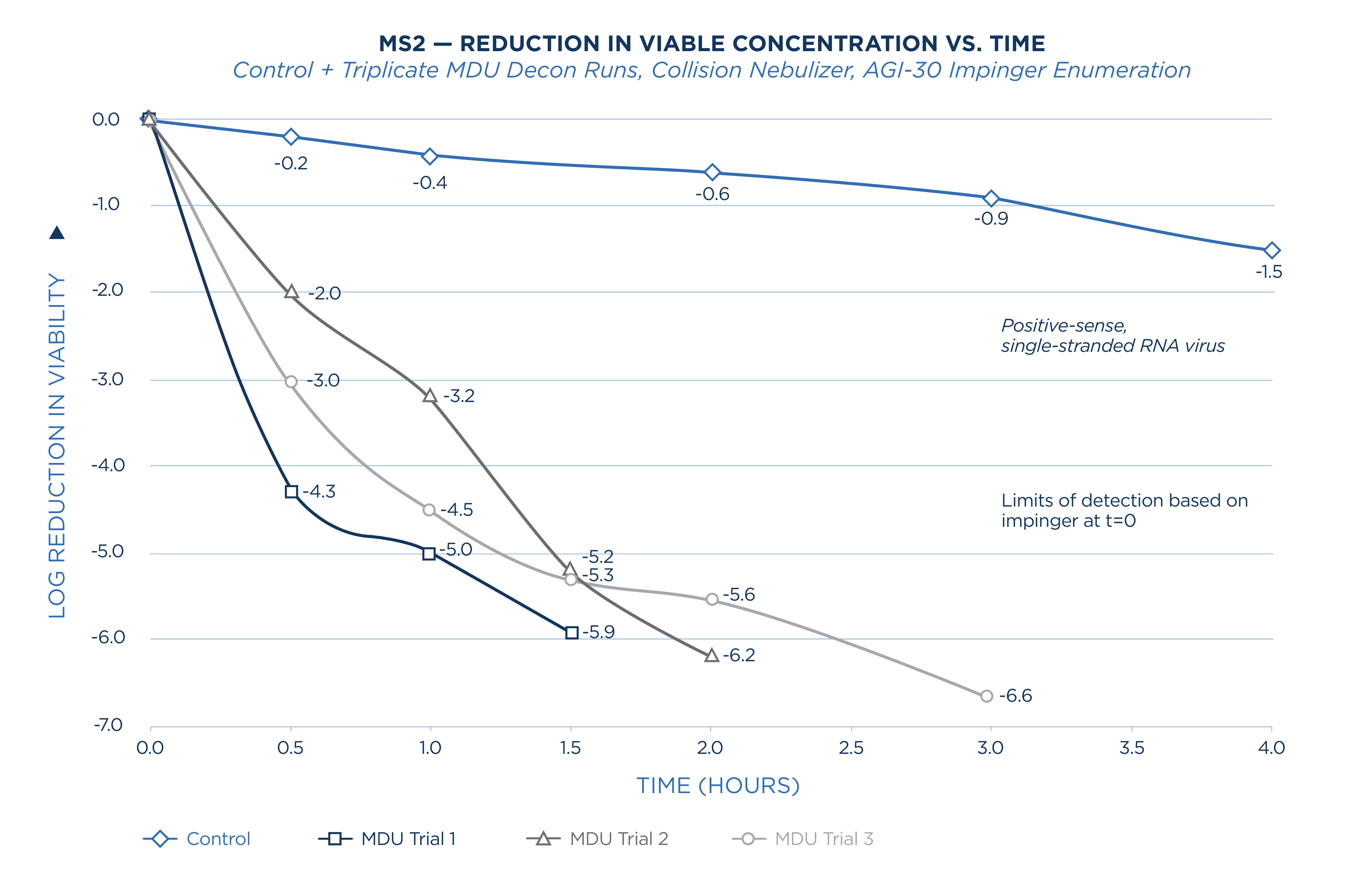
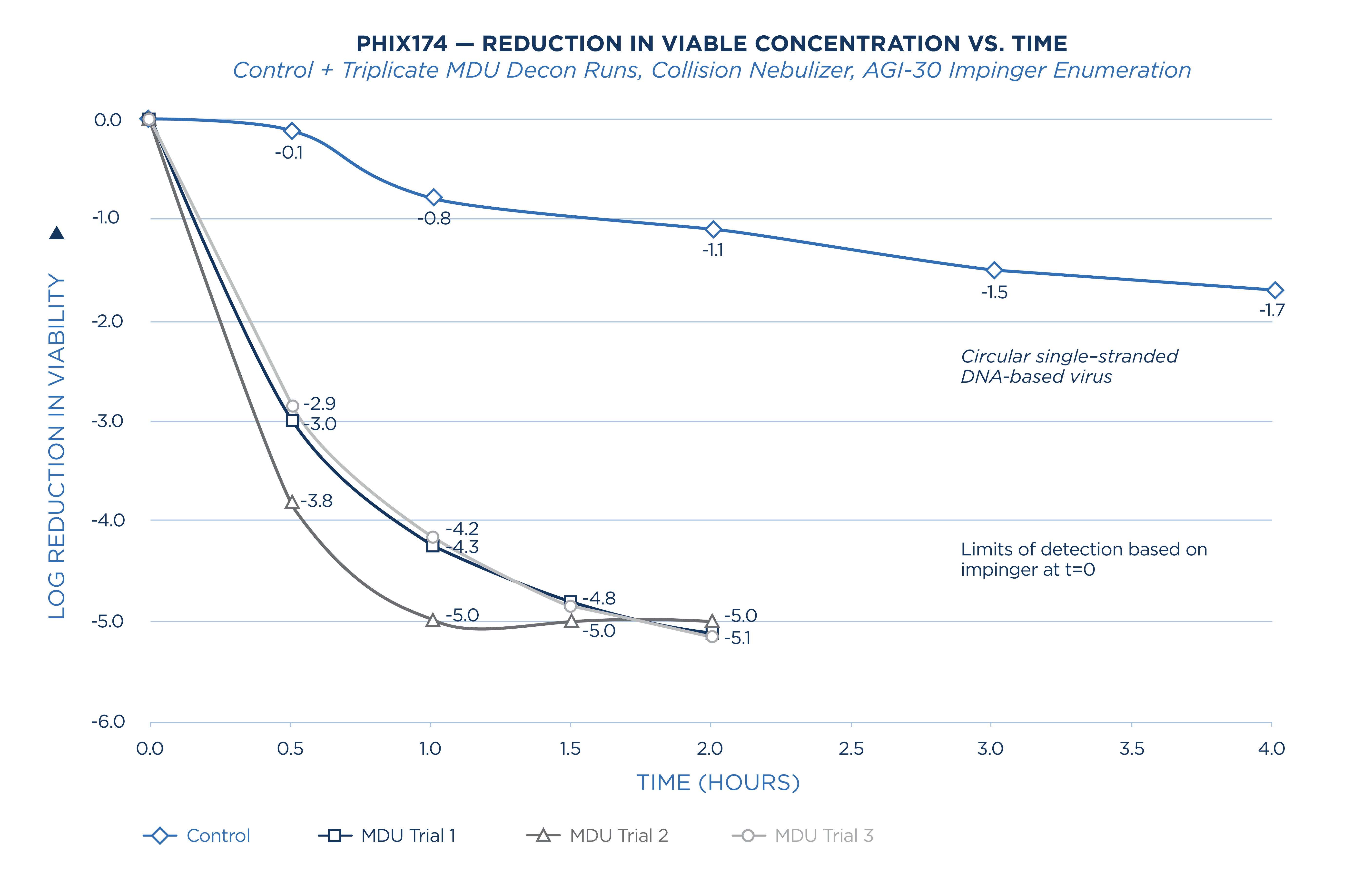
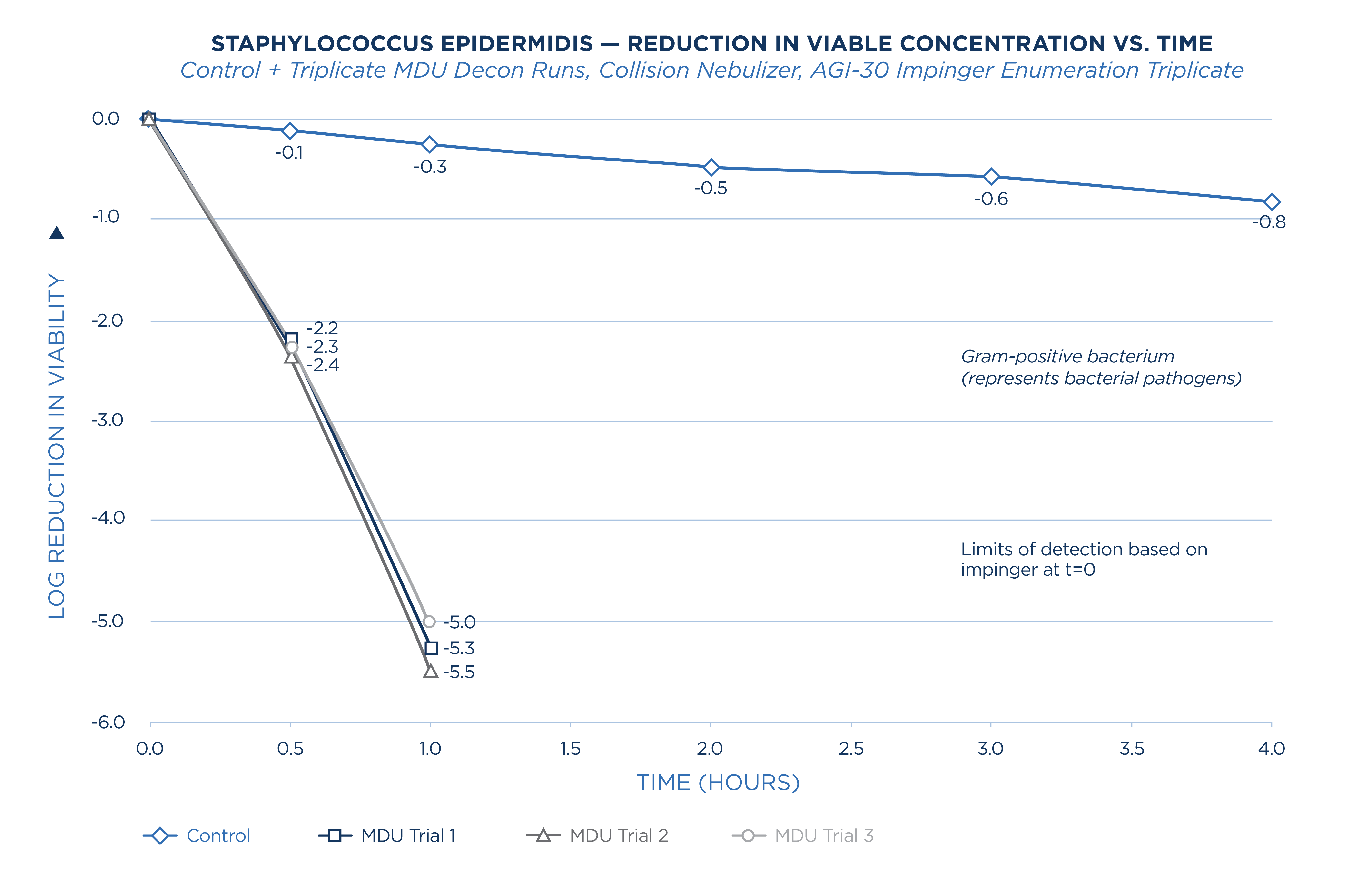
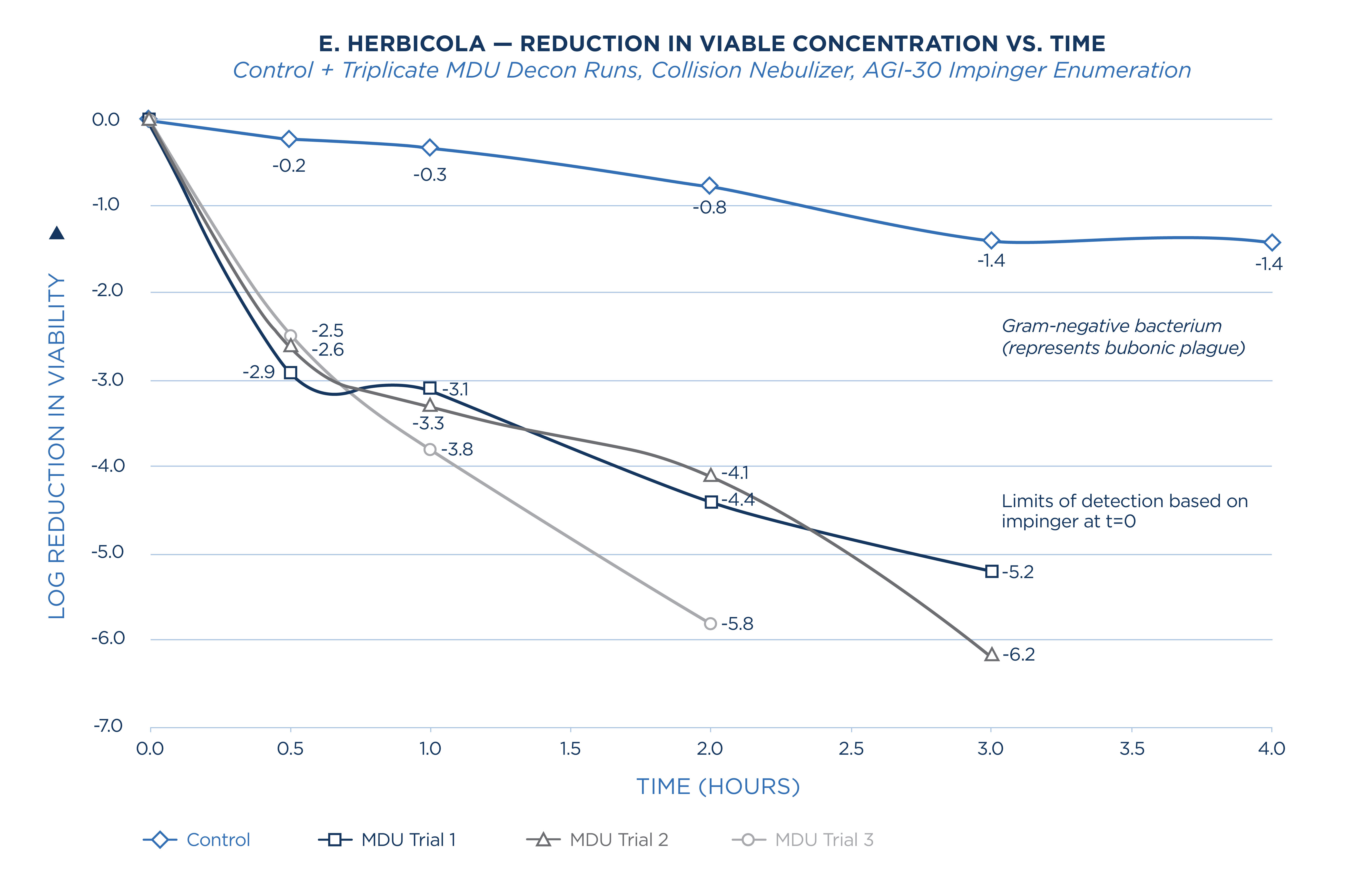
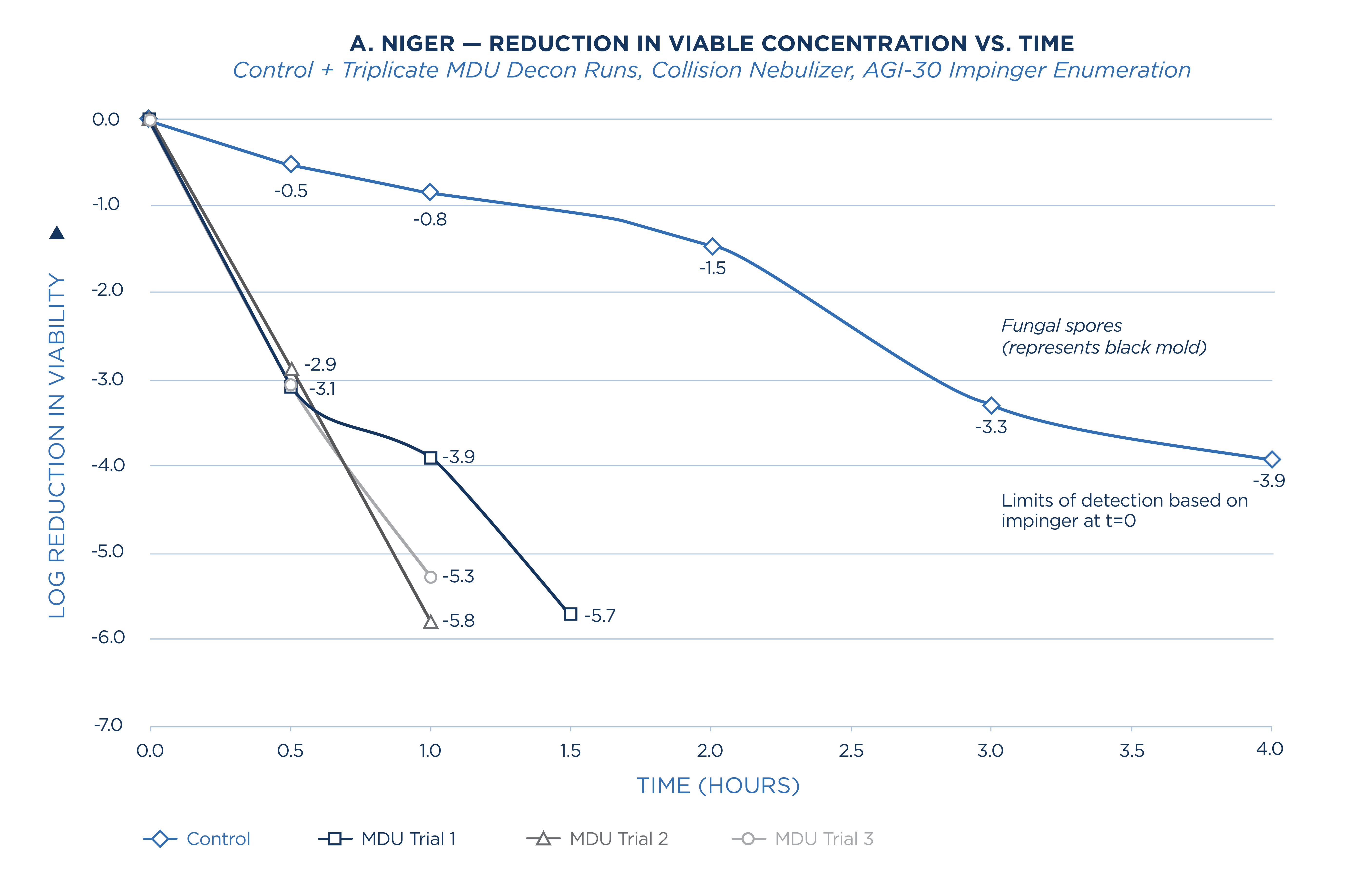
Safety and Toxicity
Comparative Biosciences, Inc. in compliance with the US Food & Drug Administration GLP regulations (21 CFR Part 58), conducted a 13-week toxicity study on the effects of elevated Pyure output levels on a statistically significant population of rats. Rat exposure levels were 2 to 3 times higher than the maximum levels recommended by Pyure. The results showed no adverse effects on treated animals vs. control animals after continuous exposure for 13 weeks, neither at the gross or cellular level.
This toxicity study, along with the mechanism of action and pathogen destruction studies, were submitted to the FDA as part of the 510k registration and listing for the Odorox® MDU/Rx™ unit. As part of the FDA submission, a review of NIH, CDC and other relevant government databases was conducted. The review did not reveal any data or evidence that natural natural or artificial hydroxyls are in any way toxic to humans, animals or plants.
Mechanism of Action
These results were subsequently published in a peer reviewed scientific journal. (David R. Crosley, Connie J. Araps, Melanie Doyle-Eisele & Jacob D. McDonald (2017) Gas-phase photolytic production of hydroxyl radicals in an ultraviolet purifier for air and surfaces, Journal of the Air & Waste Management Association, 67:2, 231-240, DOI: 10.1080/10962247.2016.1229236).
A study conducted at the Lovelace Respiratory and Research Institute (LRRI), in an ultra-clean environmental chamber demonstrated that:
- Hydroxyl production levels of an Odorox® Boss™ unit are similar to the hydroxyl concentrations produced by sunlight outdoors
- Hydroxyls react within 20-40 milliseconds with volatile organic compounds (VOC) and generate powerful organic oxidants stable enough to circulate throughout the treatment space and sanitize air and surfaces
- The reaction rate of hydroxyls with VOC is a million times faster than ozone
- A very small quantity of ozone is produced as a byproduct of hydroxyl production, but the concentrations produced stay well within safe limits for occupied spaces
